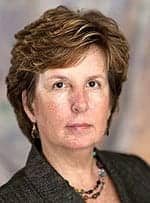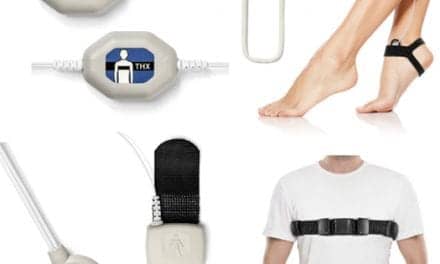
With more technologists entering the field of polysomnography than ever before, our greatest challenge is to provide them with the kind of educational opportunities they need to become registered and be successful in their profession. In order to prepare sleep technologists for the profession and to provide them with the background they need to pass the RPSGT exam, more accredited polysomnography education programs are essential.
PASS RATE/EDUCATION CONNECTION
In recent years, the number of sleep technologists has increased dramatically. In the past two decades, the cumulative number of registered technologists has soared from 412 to 15,084. In the past 3 years, record numbers of technologists have taken the RPSGT exam—10,845.
Of technologists encompassed in this surge, those who have not been exposed to high-quality education programs are the least likely to pass the exam. In 2009, in fact, only 44% of those who took the exam by virtue of 18 months of paid clinical experience managed to pass the test. The passing rate for technologists who had graduated from CAAHEP-accredited polysomnography programs was 55%. The passing rate for technologists who have other credentials and at least 6 months of experience was 65%. It is likely that a large number of candidates in this latter category also have completed CAAHEP-accredited respiratory or electroneurodiagnostics programs and/or other certificate or degree programs at some point; this likely accounts for the higher pass rate. Technologists with other credentials also tend to have more health care experience in general.
These statistics tell only half the story about pass rates and the relationship to education. Another influential factor is that the technologists with the least education also represent the largest percentage of all test-takers. They accounted for 72% of all test-takers in 2009, compared to 17% who had another credential and 10% who had graduated from polysomnography programs. The other 1% is from a new eligibility pathway added in December 2009 for candidates with 9 months of paid clinical experience and completion of the full A-STEP program.
THE CURRENT STATE OF POLYSOMNOGRAPHY PROGRAMS
While the RPSGT credential has been around for more than 30 years, it has only been in the last decade or so that significant changes have been seen in educational programs for sleep technologists. Until 2002, when the Commission on Accreditation of Allied Health Education Programs (CAAHEP) recognized polysomnography as an independent profession, there had been no independent recognition. The Joint Review Committee on Education in Electroneurodiagnostic Technology, now the CoA-END, and the Committee on Accreditation for Respiratory Care, now the Commission on Accreditation for Respiratory Care (CoARC), were both involved in this recognition. In 2003, the Committee on Accreditation for Polysomnographic Technologist Education, the CoA PSG, became a member of CAAHEP. The CoA PSG reviews and evaluates educational programs in polysomnography to determine compliance with set standards and guidelines and then makes recommendations to CAAHEP regarding program accreditation. CAAHEP is the organization awarding the program accreditation. The CoA PSG is supported by three sponsoring organizations: the Board of Registered Polysomnographic Technologists (BRPT), the American Association of Sleep Technologists (AAST), and the American Academy of Sleep Medicine (AASM). Each organization has three representatives on the CoA PSG.
In 2006, CoA PSG recommended its first polysomnography program for CAAHEP accreditation. Currently, there are 40 CAAHEP-accredited polysomnography programs, 27 through CoA PSG and 13 through CoA-END. The CoARC separated from CAAHEP in November and now accredits its own programs as the Commission on Accreditation for Respiratory Care and has nine accredited polysomnography programs.

CHALLENGING THE STATUS QUO
The existing polysomnographic programs or add-on programs represent a solid beginning. There is, however, a pressing need for more programs. Some estimates put the minimum number of necessary programs at 200. Currently, 22 states have accredited programs or are in the accreditation process. Many of these states are licensing credentialed sleep technologists as part of a nationwide project initiated by the AASM and the AAST. The licensing initiative only increases the need to provide more education programs at an increasing pace.
Sleep professionals like Bradley Vaughn, MD, FAASM, and Richard Rosenberg, PhD, have been instrumental in sparking the growth of polysomnographic education programs. These physicians were able to identify the large number of undiagnosed people with sleep disorders and the great need for better education and training for polysomnographic technologists, thus encouraging community colleges to develop programs. Vaughn and Rosenberg continue to lead the cause as speakers and members of the CoA PSG.
Online or distance learning programs are expected to play a role in the future of formal PSG programs. Cameron Harris, one of BRPT’s CoA PSG representatives and a CAAHEP commissioner, says the CoA PSG recently initiated a project to identify the challenges to accreditation that are posed by distance learning and to develop policies and procedures to address them. Currently, there is only one online program accredited through the CoA PSG. The challenge with distance learning is finding a way to ensure these programs meet the same standards and provide the same quality education as traditional programs. “Many of our accredited programs use Web-based instruction to optimize utilization of resources and maximize accessibility to students,” says Harris. “Distance learning opens a whole new dimension to education and allows access to locations that may otherwise be underserved.”
As these schools continue to develop, the BRPT and other sponsoring organizations have been pushing to upgrade professional standards so that polysomnographic technologists can be recognized as equals with other allied health professions in terms of education; however, those goals also have been tempered by modern realities.
In 2008, the BRPT announced the requirement of graduation from a CAAHEP-accredited polysomnography education program (upon the recommendation of either CoA PSG or CoARC or CoA-END) for all techs entering the field beginning in July 2012. In November, however, that requirement was postponed indefinitely due to the lack of accredited programs available around the country.
In 2007, the American Academy of Sleep Medicine created the A-STEP (Accredited Sleep Technologist Education Program) as an initial step in enhancing and standardizing education of sleep technologists entering the profession. BRPT utilized the A-STEP modules as a requirement for the 18-month and 6-month eligibility pathways and last year added a fourth pathway requiring the complete A-STEP program with 9 months of experience. In addition, the 6-month candidates with another credential are no longer required to complete the A-STEP modules. The use of A-STEP is viewed as a temporary measure while formal polysomnography education programs can be created and CAAHEP accreditation achieved.
|
Stay updated on educational issues in the sleep profession. Subscribe to Sleep Report. |
The BRPT, along with the AAST and AASM, strongly believe in formalized, high-quality polysomnography education programs. With increased availability for formalized education, technologists will perform better on the credentialing exam.
These three groups are working hard to promote the continued development of formal educational programs for individuals entering the field of polysomnography, as well as those already involved in sleep medicine. One of the CoA PSG’s goals this year is to get as much information out to technologists, schools, community colleges, and universities as possible to promote the development of much needed programs in polysomnography. As part of this initiative, CoA PSG will be exhibiting at SLEEP 2010 in June. At the conference, the CoA PSG will also give a presentation on starting a polysomnography program as part of the AAST education program. A similar presentation is planned for the BRPT Symposium, Leadership: Scaling New Heights, in Denver on September 23-26, 2010. This groundswell of activity is impressive. It’s imperative we keep the momentum going. SR
Janice East, RPSGT, R. EEG T., is president of the Board of Registered Polysomnographic Technologists (BRPT). East is also the director of sleep disorders, neurodiagnostics, and rehabilitation services for Morton Plant Mease Health Care. She served as chairman of BRPT’s Application Review Committee and served on the Professional Discipline Committee until 2009. East also currently participates on the Exam Development Committee. The author can be reached at [email protected].




